Shlomo Havlin
Efficient learning strategy of Chinese characters based on network approach
Mar 07, 2013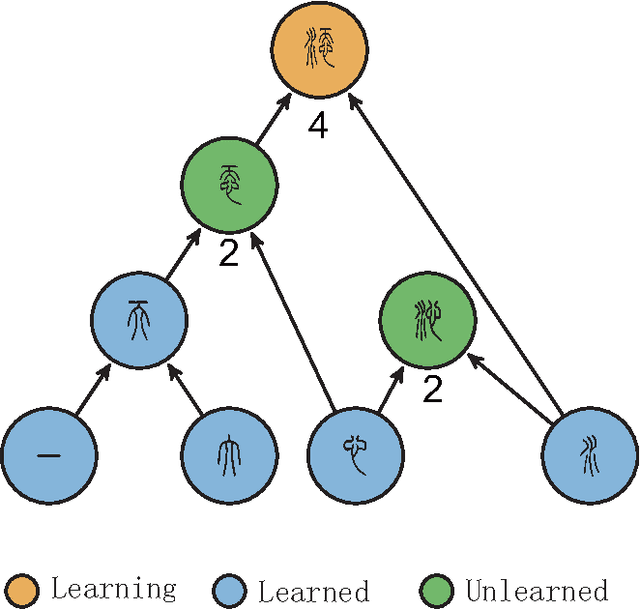
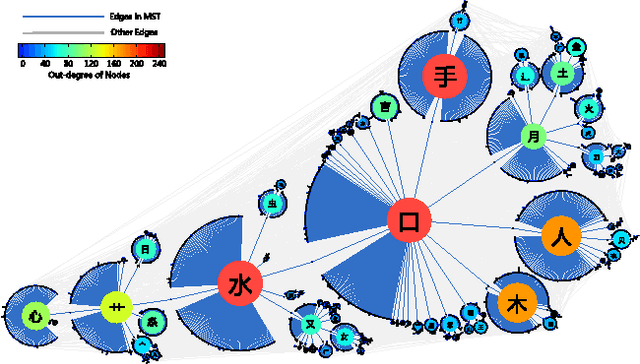
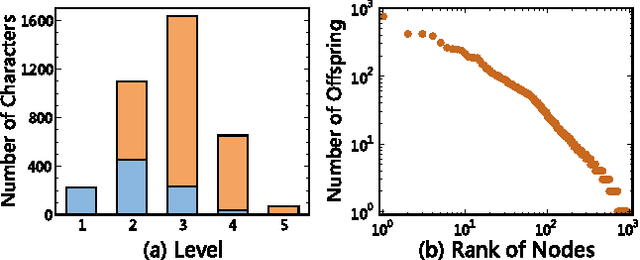
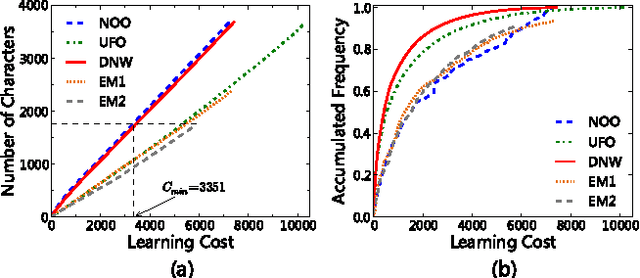
Abstract:Based on network analysis of hierarchical structural relations among Chinese characters, we develop an efficient learning strategy of Chinese characters. We regard a more efficient learning method if one learns the same number of useful Chinese characters in less effort or time. We construct a node-weighted network of Chinese characters, where character usage frequencies are used as node weights. Using this hierarchical node-weighted network, we propose a new learning method, the distributed node weight (DNW) strategy, which is based on a new measure of nodes' importance that takes into account both the weight of the nodes and the hierarchical structure of the network. Chinese character learning strategies, particularly their learning order, are analyzed as dynamical processes over the network. We compare the efficiency of three theoretical learning methods and two commonly used methods from mainstream Chinese textbooks, one for Chinese elementary school students and the other for students learning Chinese as a second language. We find that the DNW method significantly outperforms the others, implying that the efficiency of current learning methods of major textbooks can be greatly improved.
* 8 pages, 6 figures
Languages cool as they expand: Allometric scaling and the decreasing need for new words
Dec 11, 2012


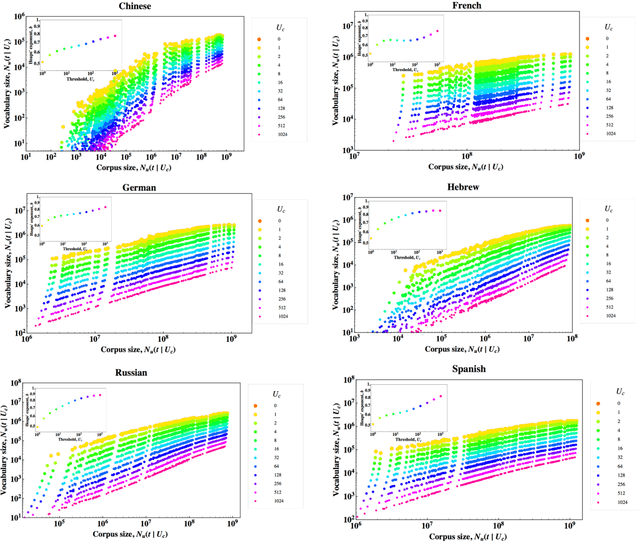
Abstract:We analyze the occurrence frequencies of over 15 million words recorded in millions of books published during the past two centuries in seven different languages. For all languages and chronological subsets of the data we confirm that two scaling regimes characterize the word frequency distributions, with only the more common words obeying the classic Zipf law. Using corpora of unprecedented size, we test the allometric scaling relation between the corpus size and the vocabulary size of growing languages to demonstrate a decreasing marginal need for new words, a feature that is likely related to the underlying correlations between words. We calculate the annual growth fluctuations of word use which has a decreasing trend as the corpus size increases, indicating a slowdown in linguistic evolution following language expansion. This "cooling pattern" forms the basis of a third statistical regularity, which unlike the Zipf and the Heaps law, is dynamical in nature.
* 9 two-column pages, 7 figures; accepted for publication in Scientific Reports
Statistical Laws Governing Fluctuations in Word Use from Word Birth to Word Death
Feb 15, 2012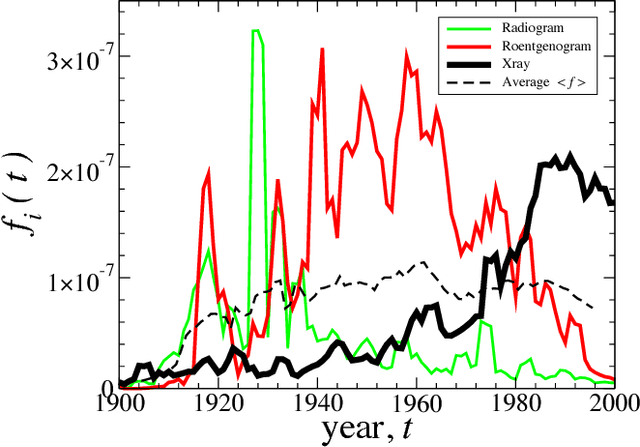
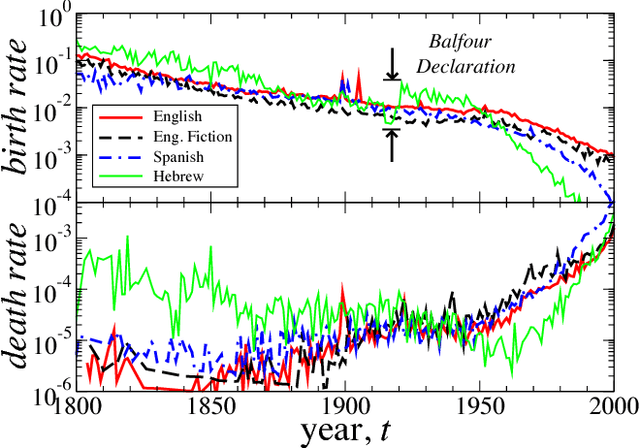
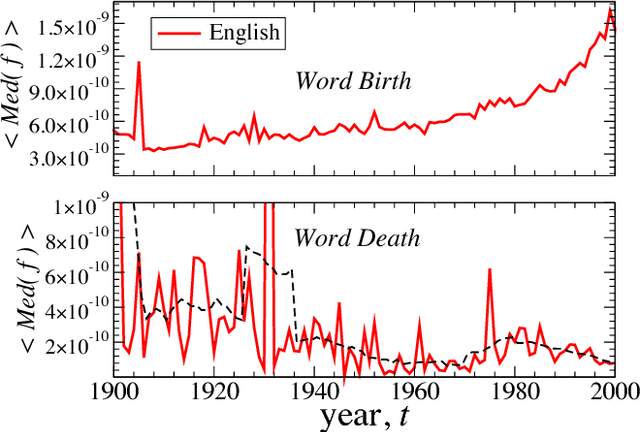
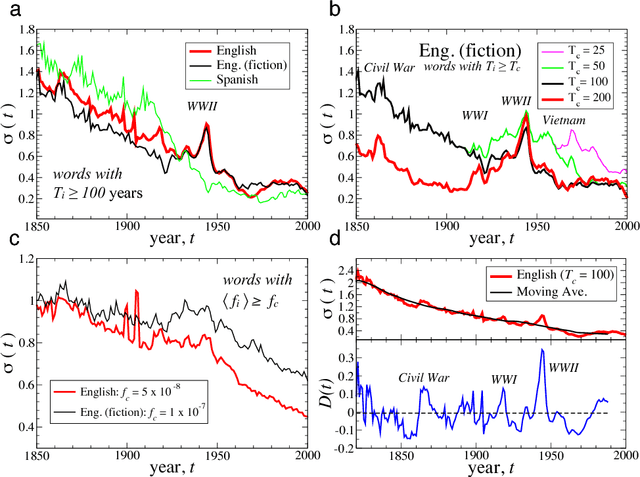
Abstract:We analyze the dynamic properties of 10^7 words recorded in English, Spanish and Hebrew over the period 1800--2008 in order to gain insight into the coevolution of language and culture. We report language independent patterns useful as benchmarks for theoretical models of language evolution. A significantly decreasing (increasing) trend in the birth (death) rate of words indicates a recent shift in the selection laws governing word use. For new words, we observe a peak in the growth-rate fluctuations around 40 years after introduction, consistent with the typical entry time into standard dictionaries and the human generational timescale. Pronounced changes in the dynamics of language during periods of war shows that word correlations, occurring across time and between words, are largely influenced by coevolutionary social, technological, and political factors. We quantify cultural memory by analyzing the long-term correlations in the use of individual words using detrended fluctuation analysis.
* Version 1: 31 pages, 17 figures, 3 tables. Version 2 is streamlined, eliminates substantial material and incorporates referee comments: 19 pages, 14 figures, 3 tables
 Add to Chrome
Add to Chrome Add to Firefox
Add to Firefox Add to Edge
Add to Edge